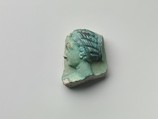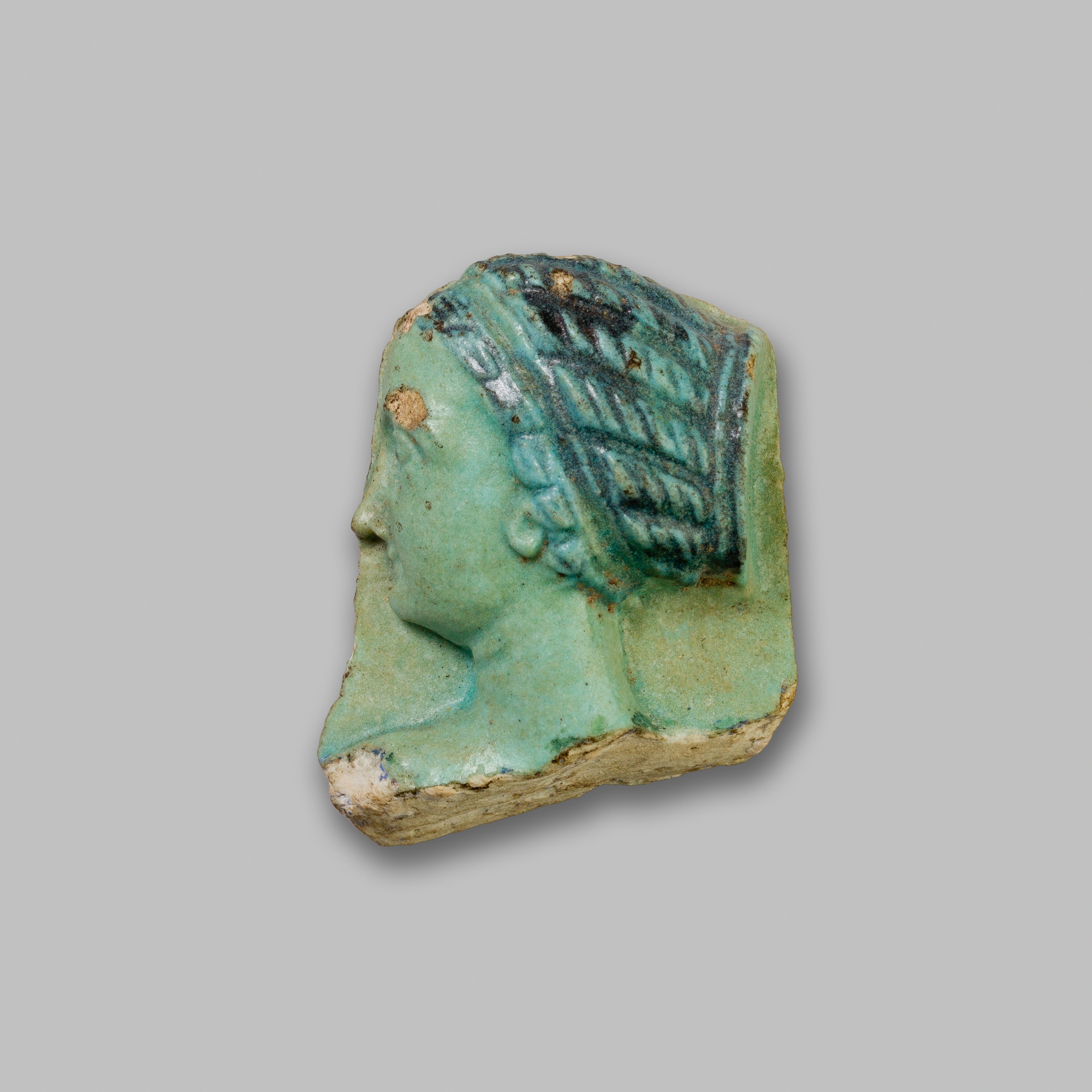Fragment of a Vase Depicting Arsinoe II
Ptolemaic Period
Ptolemaic oinochoai (wine-jugs) with portraits of the queens were libation vessels associated with the royal cult, most likely with the Arsinoeia, the festival established in honor of Arsinoe II. On complete examples, the figure of the queen pours a libation at a sacrificial altar with a sacred pillar standing behind her, a scene which suggests that underworld gods are addressed, possibly funerary gods. The ritual use of faience and stylistic features are indicators of the influence of traditional Egyptian culture on the type.
A good many fragments of such vessels are preserved, many from Alexandria, some from a few other sites in Egypt and from around the Mediterranean. They might have been distributed or purchased for use at the festival, and may well have acquired other uses, including a funerary association, since a number of examples were found in cemeteries.
The type seems to extend from Arsinoe II in the first half of the 3rd century B.C. until the mid to late 2nd century B.C. This fragment, identified as Arsinoe II, based partly on similarities to her coin portaits, is considered by the expert in these objects to be the finest head of Arsinoe frrom such a vessel.
Due to rights restrictions, this image cannot be enlarged, viewed at full screen, or downloaded.
This artwork is meant to be viewed from right to left. Scroll left to view more.



